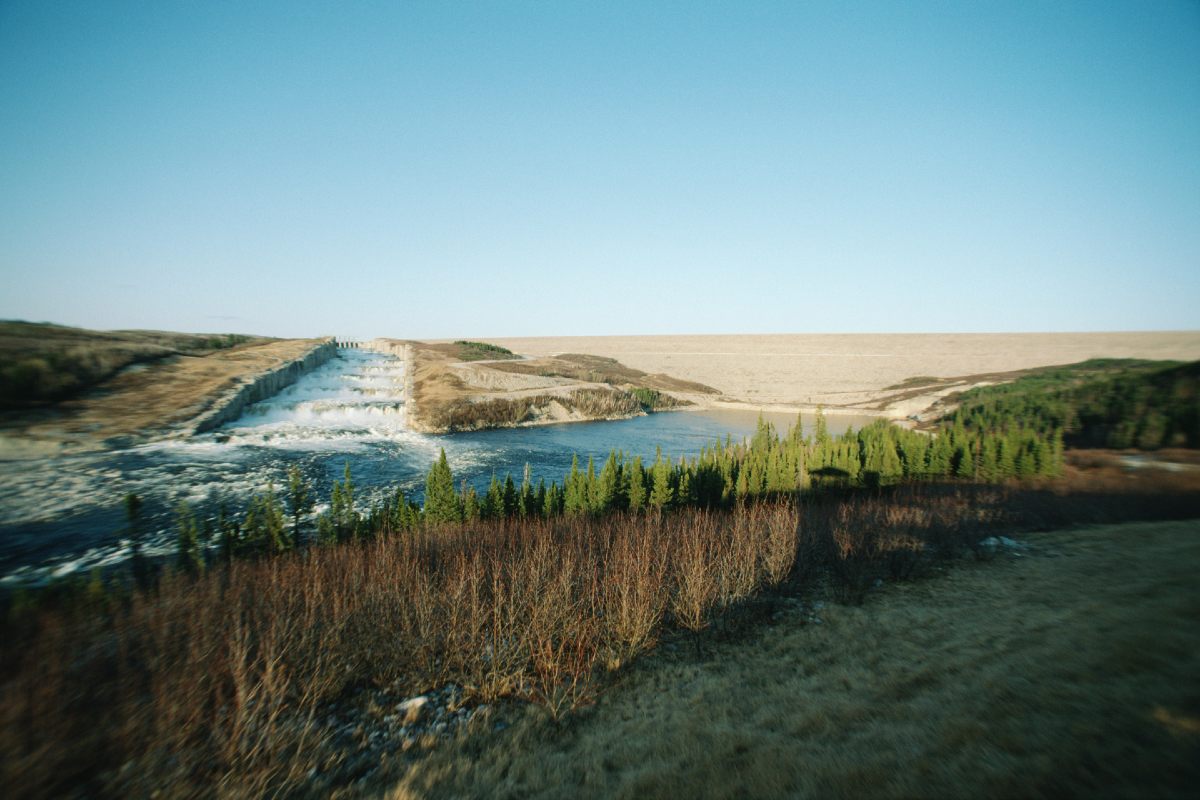
A hydroelectric plant in James Bay. A new study by UAlberta scientists is examining the surprising impact of hydroelectric regulation on Hudson Bay. Photo source: Getty Images
Research by oceanographers at the University of Alberta is shedding new light on the complexities of currents in Hudson Bay—and the impact of the hydroelectric power industry on them.
“Our most significant finding was that there is a seasonal flow reversal in eastern Hudson Bay,” said Natasha Ridenour, PhD student in the Department of Earth and Atmospheric Sciences and lead author of both studies on the topic. “This gives us a better understanding of the impact the hydroelectric industry has on Hudson Bay—and a better understanding of where river water carries nutrients, pollutants, and contaminants in the bay, which can get into the food chain.”
Currents in Hudson Bay were previously thought to solely flow counterclockwise, based on studies from the 80’s—but the researchers found that in May and June, the flow pattern in eastern Hudson Bay reverses and flows in a clockwise direction, while currents in western Hudson Bay continue to flow counterclockwise.
Ridenour explained that the flow reversal is generated by winds and snow melt in the spring—but is also sensitive to where the river discharge enters the bay, which can be changed by hydroelectric operations.
“The results from these two papers tell us that river discharge is important, and that hydroelectric regulation likely has an impact on the bay,” said Ridenour, who conducted the research under the supervision of Paul Myers, professor in the Department of Earth and Atmospheric Sciences. “This is especially important to understand if we are to increase hydroelectricity production as a form of renewable energy.”
From the river to the sea
The drainage basin for the Hudson Bay region covers about 40 per cent of Canada, with waters as far as the Rocky Mountains draining into Hudson Bay. This makes the area ideal for hydroelectric development, explained Myers, but means it’s critical to understand the impact on the Hudson Bay system.
“With the expansion of the hydroelectric industry in Manitoba, Ontario, and Quebec, the downstream impacts of altering river discharge are unknown,” said Myers. “This research is critical to fully understanding the impact of the hydroelectric industry on ocean currents in Hudson Bay, which is useful to not only hydroelectric industry, but the shipping industry and indigenous communities along the coastline as well.”
The papers, “Sensitivity of freshwater dynamics to ocean model resolution and river discharge forcing in the Hudson Bay Complex,” and “Revisiting the Circulation of Hudson Bay: Evidence for a Seasonal Pattern” were published in the Journal of Marine Systems (doi:10.1016/j.jmarsys.2019.04.002), and Geophysical Research Letters (doi:10.1029/2019GL082344), respectively.